

In the morning we took the bus to CAXA, the central bus station of Xalapa, to take another bus to Perote, where we would take the bus to Tlalconteno. When we arrived at CAXA we walked to a stand that sells second hand books. In the past I had bought a few books there, and this time I noticed a very nice book: "Huellas y otros rastros de los mamíferos grandes y medianos de México" (Footprints and other signs of the great and medium mammals of Mexico) by Marcelo Aranda. At just 120 pesos I couldn't resist, and bought the book.
Esme bought our tickets, and we got onto the bus to Perote. When we arrived at Perote we walked into the direction of the supermarket. Suddenly Esme stopped in front of Taqueria "Taz" and asked if we could eat some tacos. I agreed and so we had both some tacos al pastor, which were excellent.
After this pleasant brunch we walked to the Elektra building to take the bus to Tlalconteno. The bus station is a bit hidden and looks quite ancient. We were lucky, shortly after we got on it left.
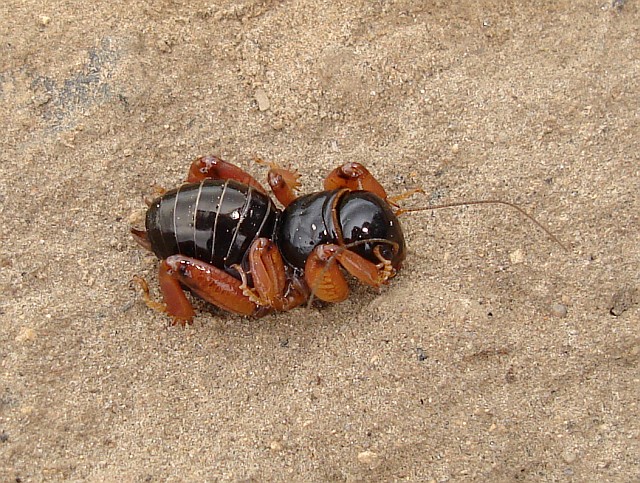
When we got off the bus in Tlalconteno a slow drizzle started and we got into our rain coats. We followed the road in the general direction to La Gloria. Esme asked once if we where on the right road to La Gloria, and it was confirmed. I looked under stones close to the road, and under one I found an insect that looked to me like a mole cricket. Esme took a photo of the animal after I had put it on the underside of the overturned stone.
Note: people at Arachnoboards identified the cricket as a Jerusalem cricket (Stenopelmatus species). Spanish names: niño de la tierra ("child of the earth"), cara de niño ("child's face").
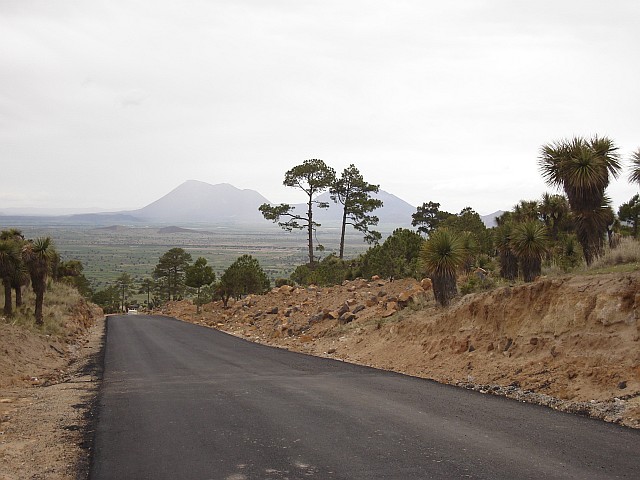
After a short walk we arrived at a brand new partially finished hardened road. We followed the road. In the distance, located about 27 km away from where we walked, we could see Las Derrumbadas, twin rhyolitic domes.
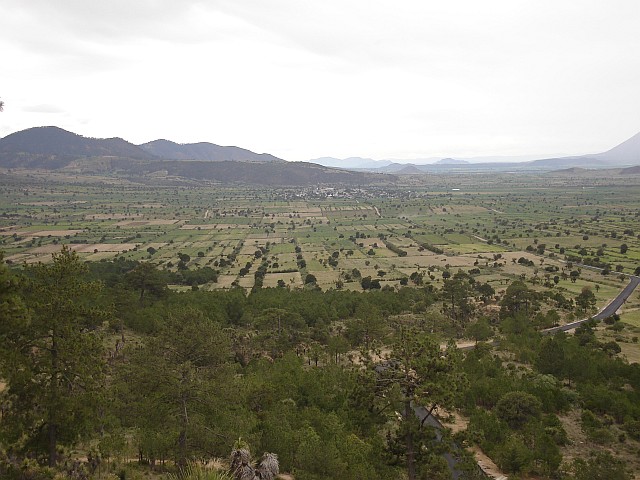
The hardened road turned to the right, and made a lazy bend back much more down below were we where standing. In the distance we could see La Gloria, and more to our right the lava field, and a dry river bed meandering through the land scape. We took a short cut and walked down the slope instead of following the road.
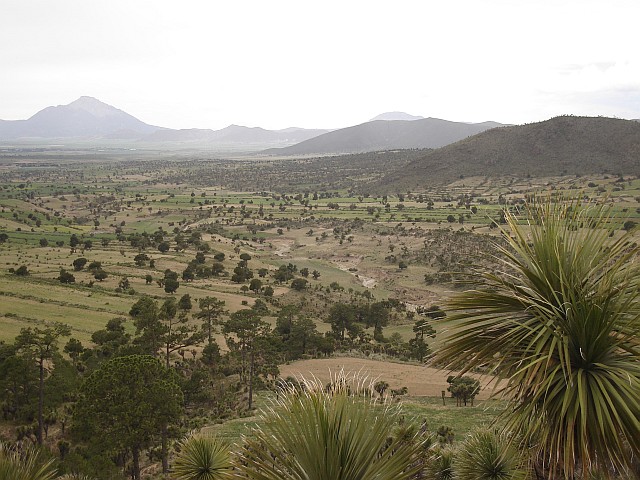
On our walk down I lifted one flat rock resting against a big bolder. Goosebumps! Something large was moving from the left to the right again and again. When my heart beat reached normal levels again I noticed that the "horror" was actually a large lizard not able to decide if it should stay where it was, run to the left, or the right. Before I got the camera ready though, it decided that to the right was the best option, and it ran away. It was a large spiny lizard (Sceloporus species) that had scared me.
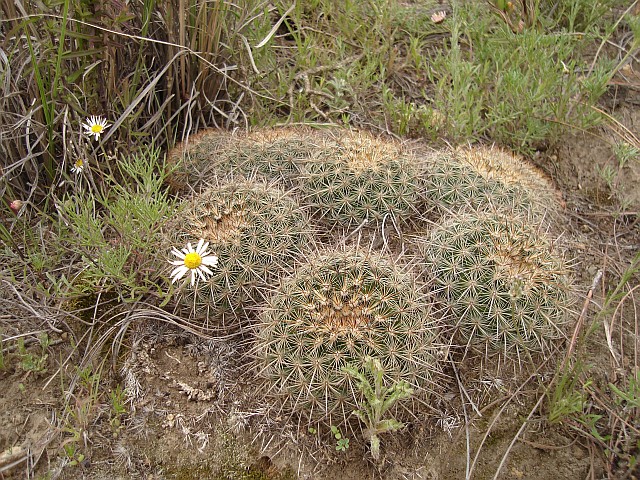
We continued down, and arrived at the hardened road again. I decided that we should walk in a straight line towards the lava field, roughly in the direction of the dry river bed and crossing it.
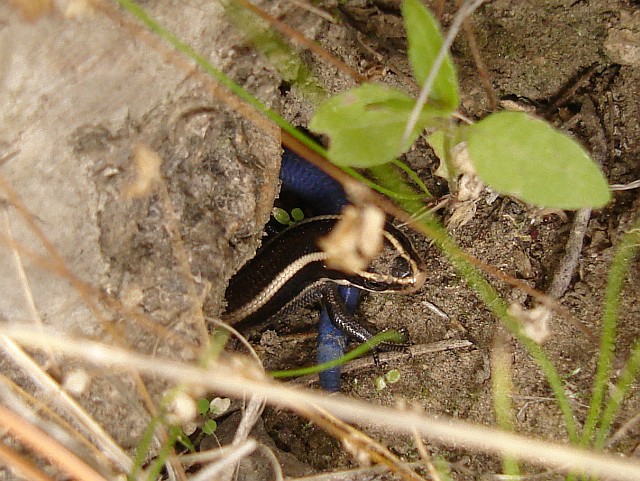
When I looked under a small stone, a small skink with a beautiful blue tail ran away, or better, it look liked it swam away because of how it moved. It hid itself under a cactus. I called Esme, and together we tried to make the skink reappear so I could take a picture.
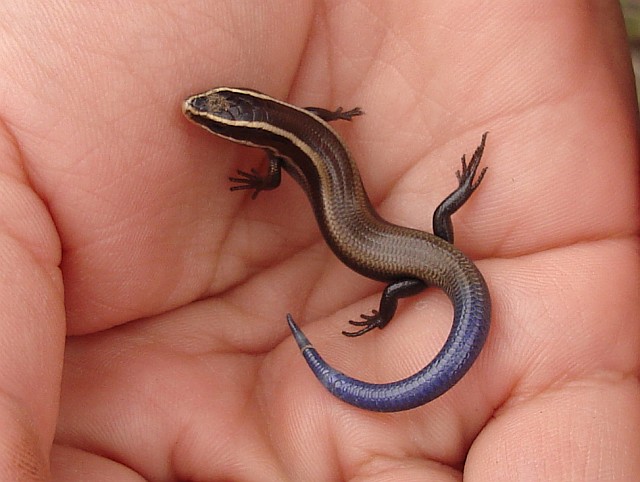
I managed to let it walk onto my hand. It climbed up my arm, and ended up under one of the straps of my backpack. Esme carefully removed the animal out of this dangerous position, and it stayed on her hand so I could take a few photos.
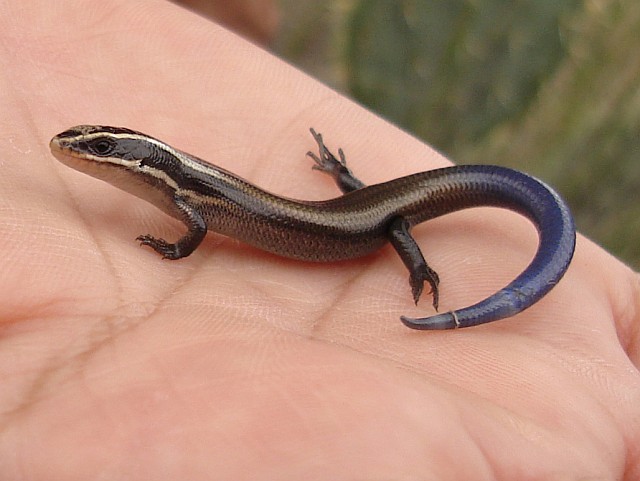
Note: Tim Burkhardt identified this skink as a juvenile Eumeces bilineatus bilineatus.
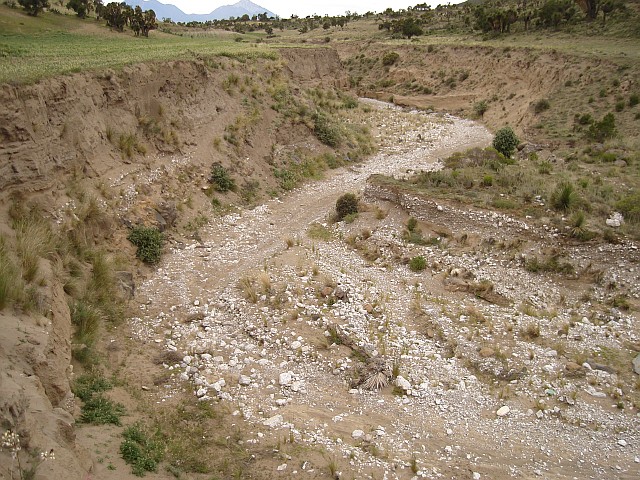
We continued our walk, and descended down to the dry riverbed, and followed it for a while. I looked under several stones, and under one I found a black widow.
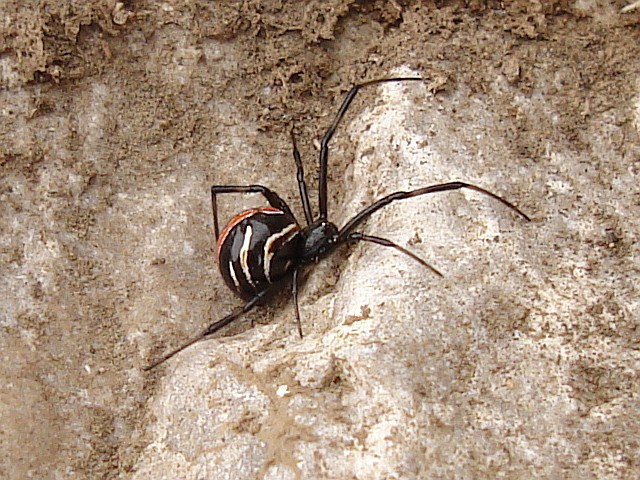
We kept walking in the general direction of the lava field, following dirt roads with crop fields to the left and the right. After quite some time we arrived at the (visible) start of the lava field.
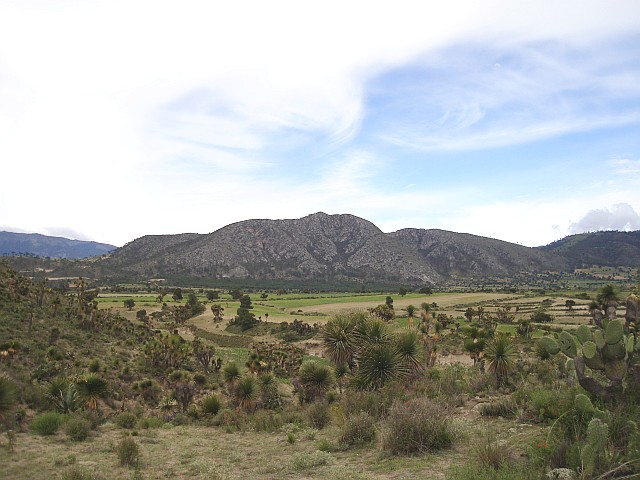
I took a few photos of the landscape. The above photo is in the eastern direction. You can see the dry river bed meandering in the landscape. To the far left is the town of Tlalconteno (not visible).
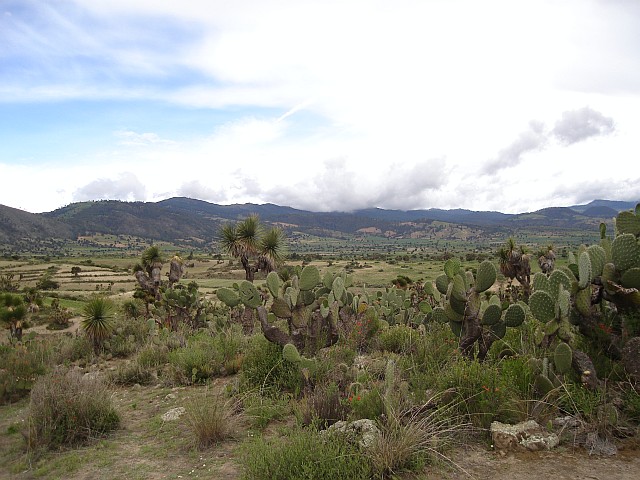
The above photo is taken in south eastern direction from the start of the lava field. La Gloria is more to the right and hence not visible in the above picture.
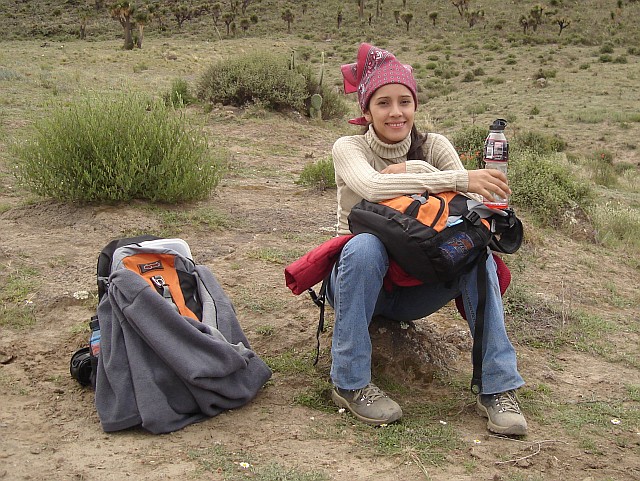
We decided to take a short break before we continued our journey.
Read the next part of this blog entry in: The walk to the volcano.